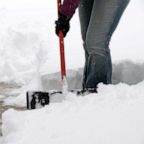RSV to Blame for 1 in 13 Pediatrician Visits
Feb. 5 -- WEDNESDAY, Feb. 4 (HealthDay News) -- It's called respiratory syncytial virus (RSV), a childhood infection that's responsible for one of every 13 visits to a pediatrician, and one of every 38 emergency room trips, a new study found.
What's more, the virus is to blame for inpatient hospital stays for one out of every 334 children. And, it's not just kids with underlying lung disease or immune system deficiencies -- the virus strikes healthy children, too.
"Although we've known for a long time that RSV is highly contagious and that RSV is the most important cause of lower respiratory tract infections in young children, this study gives us an idea of how common RSV infections are in the various age groups," said the study's lead author, Dr. Caroline Hall, a professor of pediatrics and medicine at the University of Rochester School of Medicine and Dentistry in New York.
Hall said that the incidence of RSV, particularly in children past infancy, was higher than the researchers had suspected.
"This study destroys some old paradigms," said Dr. Andrew Nowalk, an infectious disease specialist at Children's Hospital of Pittsburgh. "They [the study authors] found RSV to have a dramatic burden, even up to age 5. We've tended to assume that if you get past 1 year that RSV won't cause you many problems, but this study found that some older children were still being hospitalized."
RSV is a virus that causes cold-like symptoms, such as coughing, sneezing, runny nose, fever, a decreased appetite, and possibly wheezing. Nearly every child in America will have had RSV by the time they reach their second birthday, according to the U.S. Centers for Disease Control and Prevention. And, in most children, the disease will be mild, so it's often indistinguishable from other winter-time illnesses, according to Hall.
The virus is transmitted through sneezing or coughing, though Hall said you'd have to be very close to someone to catch RSV directly. But, the virus can live on surfaces, like countertops, desks, phones, computer keyboards, and if you touch these items and then rub your eyes, or touch your nose or mouth, you may become infected.




